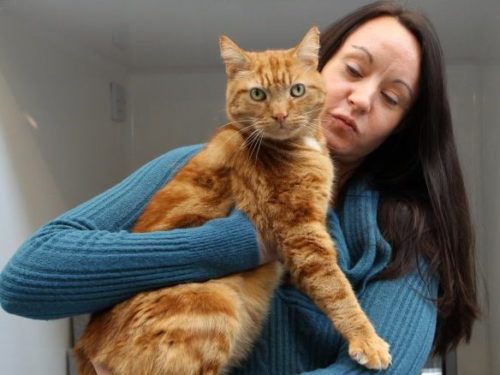
A chat with Jane
Tell us a little bit about you and your journey into behaviour change in relation to improving the lives of animals?
I have 22 years’ experience in animal welfare, starting with an Equine Science background. I then qualified as a Veterinary Nurse, after some years in practice, I moved into teaching and working for Guide Dogs, before joining Cats Protection in 2012 as Head of Neutering. I joined with a passion to make a real difference to animal welfare, understanding that we have to change the hearts and minds, attitudes, beliefs and behaviour of humans to do that. To that end, I undertook the COM-B behaviour change Summer School in 2016 and am now working towards completing my Masters in behaviour change.
I created the Community outreach team at CP, developed the Cat Watch model, which is now published and was a co-founder of the Cat Population Control Group, responsible for writing the KiND resource. I have also learnt so much from knowledgeable colleagues whilst working on these projects, and feel privileged to have had the opportunity.
Why does behaviour change matter?
The urgency of many poor animal welfare situations often means welfare practitioners react and rescue the majority of the time. However, to make real change and impact, we must address the root causes of the problems, and these almost certainly always lie in human behaviour.
Most inspiring behaviour change intervention (animal welfare or other) and why?
To give a very up to date and live example, the most inspiring behaviour change happening as we speak has to be the campaigning by Greta Thunberg. Her work may not have set out as a well-planned behaviour change campaign, but she is role-modelling the importance of understanding climate change, educating and informing, starting to lay down new social norms and using key communications which are simple and effective. I was also a volunteer on the Barnardo’s practical home management programme, which helped struggling parents to manage things like nutrition and finances. Changes in self-efficacy were measured throughout the programme and good outcomes due to increased self-efficacy meant that families were enabled to improve their opportunities and stay together.
What’s your vision for behaviour change for the next five years?
I would love to see the concept of ‘One Welfare’ moving forwards, so that human welfare agencies and animal welfare agencies can truly work collaboratively to deliver behaviour change in contexts, which would bring about positive change and much improved welfare for animals and humans.
How did you become involved with Human Behaviour Change for Animals?
I met Suzanne and Jo at their inaugural International Conference on Human Behaviour Change for Animals in 2016, which was a fantastic and inspiring event. Following that Suz and Jo delivered some training for my team at CP and since then I have worked with HBCA delivering a workshop at the conference in 2018 with my colleague, followed by another hosted by CP.
Why do you like working with HBCA?
I’ve always believed in collaborative working whereby we can achieve the most for animals. HBCA provides an excellent vehicle to do that as well as bringing together experts (and friends) to share learnings and best practice, which saves us all re-inventing the wheel!
Top tip for organisations getting started with behaviour change?
My top tip is, don’t assume anything and refrain from making judgements based on your own biases about the audience you want to work with. Often what you think might work well, just won’t! Base everything you do on insights from consultation and co-design of interventions.
Specialisms
- Planning of long-term campaigns at community level
- Designing behaviour change interventions
- Working with ‘hard-to-reach’ audience – communication interventions
Connect with Jane:
LinkedIn: https://www.linkedin.com/in/jane-clements-4938b3a2
Email: jane.clements@cats.org.uk

